This is a preview of our Texas 2036 newsletter highlighting the state’s population trends. To receive this weekly look at our work, sign up here.

From Lone Star State to Lodestone State: Texas Remains Attractive to Natives and Newcomers
Setting the stage: Originally launched in 2020, our 7th Texas Voter Poll was conducted at the end of August.
- The poll gauges public support for nonpartisan policies and lays out a roadmap for state leaders to strengthen voter confidence and move Texas forward.
Texas, Our Texas 🎶: 77% of surveyed voters told us they don’t plan to leave the Lone Star State anytime in the next few years.
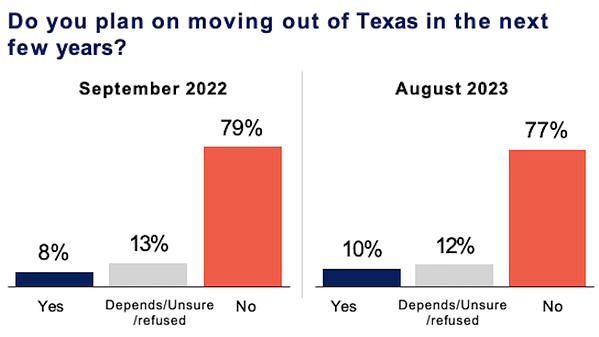
Heading for the exits: Meanwhile, 10% told us that they plan to leave Texas while 25% of those staying said they had considered moving.
- These figures are driven particularly by women and young voters who say their thinking is driven largely by political or social reasons.
- Among the most popular reasons for leaving:
- 13% cited politics or social issues for why there considering moving away
- 6% cited family or personal reasons
- 5% cited affordability of living, including housing and health care
- 5% cited weather

The case for staying: Meanwhile, 79% told us they were not planning or considering a move out of Texas.
- Among the most popular reasons for staying:
- 45% cited family or personal reasons
- 14% cited affordability of living, including housing and health care
- 10% cited their job or the economy
- 5% cited politics or social issues
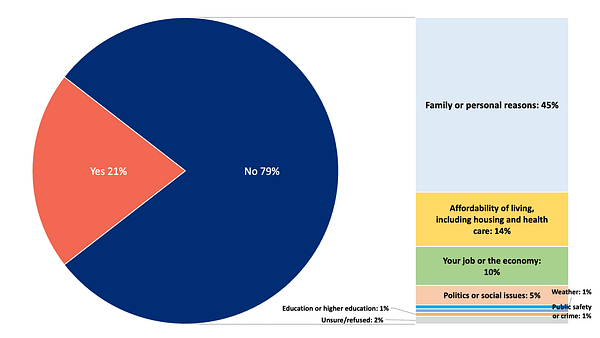
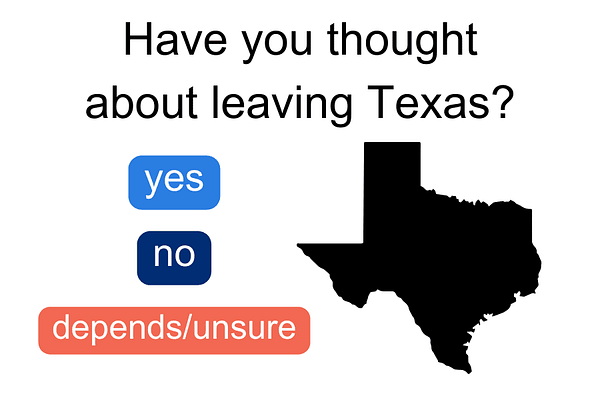
Most Texans choose to stay put 🏡
A Texas 2036 analysis of population migration data kept by the Internal Revenue Service found that 10 million Texas households representing 21.3 million Texans did not move between 2020 and 2021.
The Federal Reserve Bank of Dallas wrote an attention-grabbing study this summer diving into the relative ability of states to hold on to their native residents. They termed this a state’s “stickiness”.
And they found that Texas is the nation’s stickiest state with 82% of those born there still living there. The next stickiest state was North Carolina with a 75.5% stickiness rate, followed by Georgia (74.2%), California (73%) and Utah (72.9%)
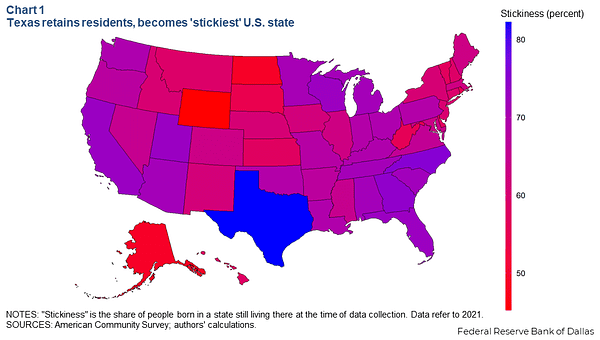
📈Dive deeper: Factors playing into states’ stickiness include higher than average job growth and below average state and local taxes. In Texas’ case, the Dallas Fed additionally notes that the sheer size of the state might also play a factor. Why? Moving out of Texas costs more.
Not From Texas? Texas Wants You Anyway 🤠
The state is projected to add 5 million residents by 2036 with migration from other states as the driving force behind the boom.
- California is by far the biggest driver of new Texas residents.
- For every Texan household that moved to California in 2021, 2.5 households moved from California to Texas.
- Californians brought $7.2 billion in adjusted gross income with them to Texas while Texans took $1.6 billion in adjusted gross income to California.
Case example: The Austin-Round Rock metropolitan area exemplifies the impact of in-migration from high income metro areas from out of state.
- As the chart below notes, six of the 10 metro areas contributing the most households to Austin’s migration inflow were from four states — California, New York, Illinois and Washington.
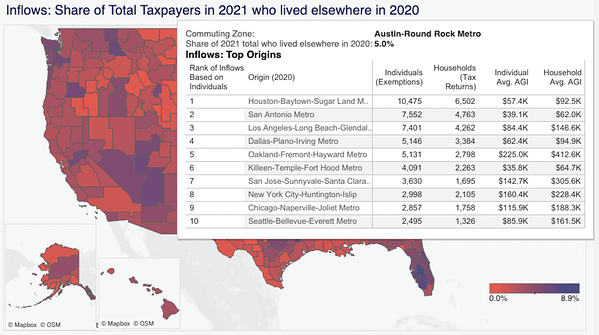
Explore more: We’ve created an “Understanding Texas” online dashboard that allows you to look in-depth at overall growth projections for Texas, including migration patterns into and out of Texas.









